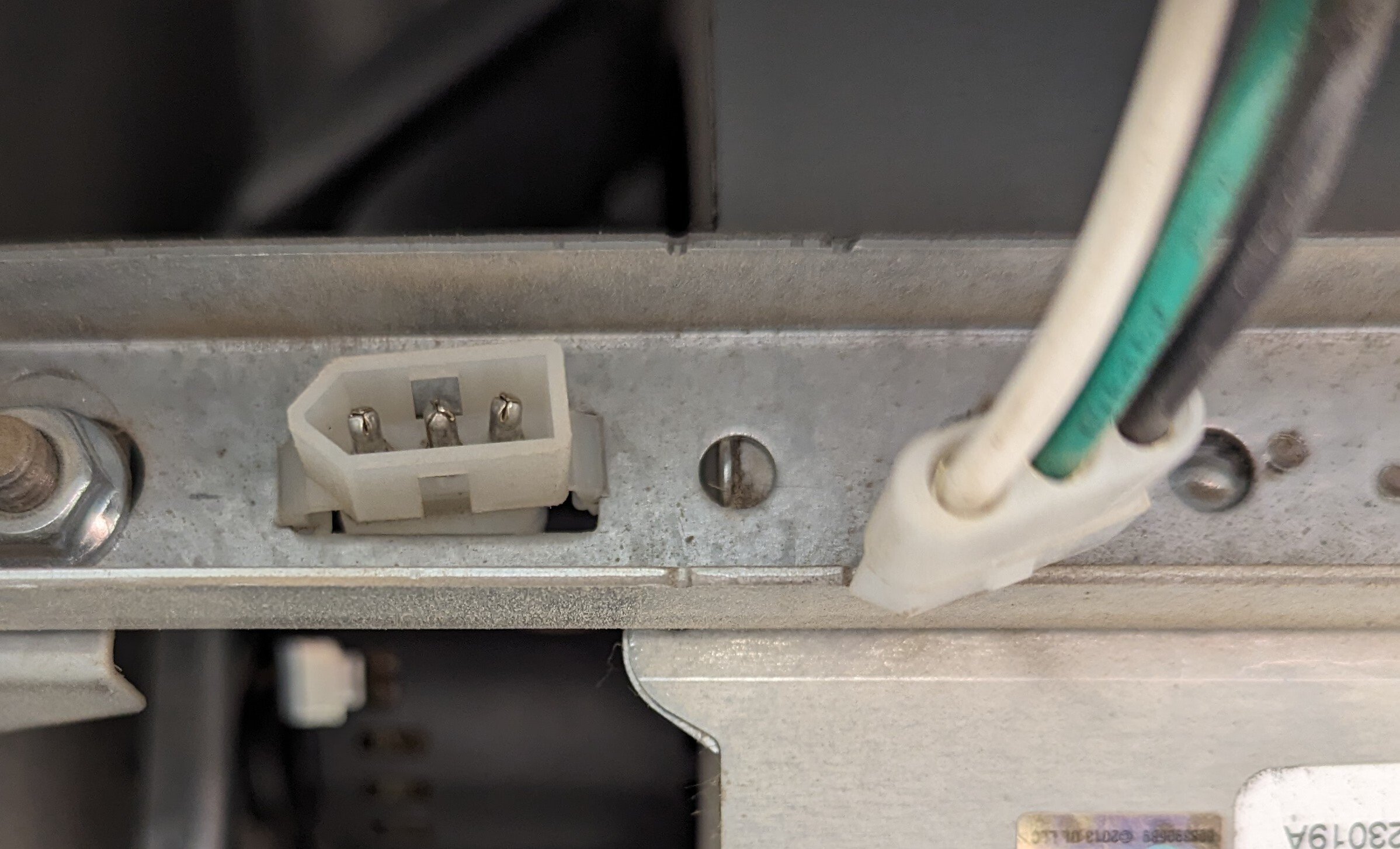I'm looking to install some cutoff switch on this 3-pin connector. It almost looks like a PC 4-pin 12v connector, but it actually connects to a Broan CRV motor. Specific model is the L150L.
I originally wanted a ventilator with a timer, but they installed an inline CRV (intake only) with a crazy 150CFM for a tiny 480sqft suite. Massively overkill, and loud. I'd prefer to put this on a timer, or even better would be a smart switch control. But at the very least a manual switch would be great.
For now, and for the last two years, I just have this unplugged, as shown in the image. The passive ventilation on the connected ducting has been more than enough to turn the air around. But sometimes it'd prefer to enable the intake for a time. I just can't have it on all the time because the air turnaround is nutty, not to mention the blast of cold air in the middle of winter.
Any ideas for a switch that fits this connector, or a DIY switch, and/or something to hook to a timer, OR smart switch somehow?

I was curious about the amperage as well. I mean, I didn't think they'd be allowed to keep it at 120v at the 3-pin connector, so was thinking they stepped it down somewhere.
So, obviously I've no idea what I'm talking about, but if it is drawing 1.3A from 120V, is it possible it's converted to 13A at 12V prior to this connector to the motor?
If so, I wasn't sure if a regular wall switch would work. But pretty great if a smart switch like Caseta would, since I already have some in the home.
Edit: Looking at the motor itself, as a replacement part, the sticker does say 120v. So I guess the dinky plastic connector is fine due to the low amperage.
i think they don't want to run high current through motors, as that means thick wires, and a much bigger armature and overall motor.
its the current that generates the heat and needs beefy connectors and wires.
There's plenty of mass produced mains rated motors, like most domestic floor / desk / ceiling fans vaccuum cleaners and so on.